Cheat Codes
Top 10 Best Video Game Cheat Codes of All Time!
Players have been cheating at video games for over four decades. Cheat codes have a variety of uses, but they frequently make things easier for the player by granting special abilities or even helping them skip over entire sections of the game. Some cheats will alter gameplay, while others are intended to be amusing or entertaining. This list looks at the most iconic codes in video game history. This is not necessarily a list of most useful codes, and will instead put a spotlight on the most memorable or historically significant ones.
10
Continue Code
Super Mario Bros.

After losing all their lives in Super Mario Bros., players could continue the game from the last world they reached simply by holding A and pressing the Start button. Most modern games have done away with the concept of continues, so it’s easy to underplay the importance of such a code. Moreover, experienced players will probably be able to make it to the final world in Super Mario Bros. within a matter of minutes anyway. Still, the code was a godsend for those who had not yet mastered the game. There are three central reasons why I’m recognizing this code: 1) It was one of the first video game codes; 2) It’s one of the easiest to remember, and; 3) It’s undoubtedly one of the most-used codes of all time. It’s also worth noting that Super Mario Bros. was released before the era of the Internet. This means that almost everyone who knew the code discovered it through good, old fashioned word-of-mouth. Make no mistake about it, everyone knew the code.
9
Street Fighter II Code
Street Fighter II, Street Fighter II’ Turbo

Street Fighter II was a revolutionary arcade game, and the SNES port gave Nintendo a leg-up on the competition during the 16-bit wars. Players had less than a month to hone their skills on the SNES version of the game before Champion Edition appeared in the arcades. Champion Edition added four new characters to the selectable roster and also allowed two players to select the same character when competing against each other. A highly-rumored “boss code” for the SNES version never materialized, but Capcom did throw owners of the SNES version a bone. Pressing Down, R, Up, L, Y, B when the Capcom logo is displayed allowed two players to select the same character in the game. Capcom dusted the code off the following year for the SNES release of Street Fighter II’ Turbo. Entering the code on the second controller at the right time in that game allowed players to set the speed setting to ten stars. (By default, the game only went up to four.) The code was also used in the Vs. Mode, and allowed players to turn off individual special moves at their discretion.
8
Tanks for Nothing
Grand Theft Auto III

Grand Theft Auto III helped popularize the concept of “sandbox” games, and was highly-praised for the amount of freedom it bestowed upon players. It could be a lot of fun to ignore the story completely, and the game featured many codes that made it easy to run around mindlessly and wreak havoc in the streets of Liberty City. By entering Circle, Circle, Circle, Circle, Circle, Circle, R1, L2, L1, Triagle, Circle, Triangle on the PS2 controller, players could cause a tank to spawn in the sky and drop right in front of them. The code isn’t exactly the easiest thing to remember, but everyone used it back in the day. If you were to open up the case for Grand Theft Auto III today, there’s a pretty good chance that you’d find the code written on the map or on a small sheet of paper. The tank could cause tremendous damage with its missiles or by simply running over things. It was pretty much invincible too, so there was no better way to create chaos in the game.
7
Big Head Mode
NBA Jam
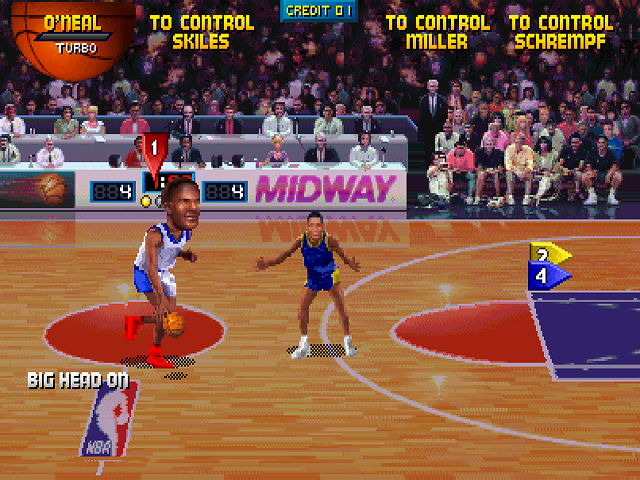
In the interest of full disclosure, I’ve always hated “big head” codes. I suppose they’re somewhat endearing in a “bobblehead doll” kind of way, but they seldom add anything to the game and can be pretty distracting at times. Still, it wouldn’t be fair for me to underplay the significance of “big head” codes in video games. For reasons unbeknownst to me, some people find the concept of oversized heads to be flat-out hilarious. NBA Jam really helped popularize the use of “big head” codes in 1993. In fairness, the code was an effective way to highlight all the basketball players and helped give gamers a better look at all the secret characters that were in the game. Big head codes were widely adopted by sports games, and also made their way into blockbuster titles like GoldenEye and Grand Theft Auto. With Virtua Fighter Kids, Sega essentially built an entire game around the concept of big heads.
6
Stage Select
Ghost ‘n Goblins

Ghost ‘n Goblins is notorious for its intense challenge, and it’s regarded by many as one of the most difficult games of all time. The simple fact of the matter is that most players will never make it to the third stage. Fortunately, by entering the correct button sequence during the title screen, players will have the freedom to start on any stage they want to. Codes that allow players to instantly skip to later stages are quite common, but the stage select code in Ghosts ‘n Goblins is noteworthy for a couple of reasons. Firstly, it was one of the first instances of a stage select code. More significantly, there is no other game in which a stage select code is more necessary. Knowledge of the code is almost essential if you actually want to see every level in the game. The level select code became something of a tradition for the series, and Capcom was kind enough to include similar codes in Ghouls ‘n Ghosts on the Genesis and Super Ghouls ‘n Ghosts on the SNES.
5
The Blood Kode
Mortal Kombat

Mortal Kombat gained a certain level of notoriety when it was first released in 1992, thanks largely to its violent content, excessive use of blood, and graphic “fatalities” in which characters would brutally murder each other. The game didn’t reach the height of its popularity until it was ported to home consoles the following year. The home versions of the game sparked debate about video game violence and censorship, and helped pave the way for an industry-wide organization to assign content ratings to games. Nintendo and Sega had their own censorship policies at the time, and had different guidelines in regards to what third-parties could get away with. The Genesis port was generally considered to be superior to the SNES version, mostly due to the fact that it retained the excessive violence from the arcade while the SNES version was heavily censored. There was one small hurdle, however. In order to unlock the violent content in the Genesis, players first had to enter a simple code during one of the opening screens. This code was easy to remember (A, B, A, C, A, B, B) and was even printed in the game’s instruction manual. The main reason why most people wanted to play the game in the first place was for the violence, so knowing and memorizing the “Blood Kode” was basically a prerequisite for playing the game.
4
“God Mode”
DOOM

True to its name, “god mode” grants players god-like abilities. These specific powers differ from one game to the next, but typically include invincibility. A 1990 roguelike computer game called Moria was one of the first games to implement such a code, and players could activate it simply by typing “god” into the game’s console. Nevertheless, “god mode” is probably most often associated with the PC version of DOOM (although the code was actually known as “degreelessness mode” in that game.) By entering “iddqd” on the keyboard, players would become completely invulnerable to almost all enemy attacks. After DOOM was released, “god mode” became something of a recurring theme for first-person shooters, and was especially prevalent on PCs. DOOM‘s code was relatively subdued compared to other games that gave the player the ability to change the camera perspective or access to previously-unreachable areas. Rise of the Triad was especially noteworthy for a “god mode” that literally turned the in-game character into a supernatural, all-powerful deity. DOOM‘s take on “god mode” was neither the first or best example of such a code being used, but it’s almost certainly the best-known version.
3
The Legend of Zelda
The Second Quest

Back in 1987, The Legend of Zelda was one of the longest and most ambitious adventure games ever released. The game was so engrossing that it came with its own map, and it was also the first console game to include a battery backup to allow players to save their progress. As if the game wasn’t epic enough, Nintendo included the mother of all Easter eggs by challenging players with a “Second Quest” upon completing the game. This Second Quest changed the placement of items and caves, featured nine brand new dungeons, and was generally a lot more challenging than the standard quest. The only problem with the Second Quest was that it could take several hours to unlock, even for experienced players who were familiar with the game. Thankfully, Nintendo provided an alternate way to access it. In lieu of finishing the game, players could simply enter “ZELDA” as their name in order to start the game on the Second Quest.
2
Justin Bailey
Metroid

Along with Kid Icarus, Metroid was one of the first two console games to feature a password system. Both of these landmark games let users input passwords to continue their progress, and also featured a handful of top secret codes for good measure. (For instance, entering “NARPAS SWORD0 000000 000000” as a password grants Samus infinite health and ammunition.) One of the most memorable aspects about Metroid was the stunning revelation that kick-ass bounty hunter Samus Aran was actually a woman the entire time. This shocking twist was not revealed until the game was over, so the existence of a code that allowed gamers to play the entire game as Samus without her power suit was greatly appreciated. If players enter “JUSTIN BAILEY” (followed by a row of 0s or spaces) as a password, Samus will have the opportunity to explore the desolate planet while wearing nothing but a leotard and a pair of thigh-high “fuck me” boots. Nintendo has not commented on the origins of this password, so many gamers have been left wondering who this Justin Bailey fellow really is. A letter published by Nintendo Power suggested that “bailey” was an old-fashioned term for a bathing suit and that Samus was appropriately “just in bailey” when the password was entered. However, “bailey” is not used to describe bathing suits anywhere in the world and the password was not even hard-coded into the game. The fact that a working password appears to reference a person’s name is purely coincidental.
1
The Konami Code
Multiple Konami Games

Up, Up, Down, Down, Left, Right, Left, Right, B, A, Start: Every gamer who grew up in the ’80s knows that code and has probably used it for countless Konami games over the years. The code was first used in the 1986 release of Gradius as a means of instantly activating power-ups in the game. Incidentally, the Konami Code was the brainchild of Kazuhisa Hashimoto, who decide to implement the code in Gradius because he found the game to be too difficult to play through during testing. The code is probably best-known for the NES version of Contra, however, where it granted players 30 lives. All told, variations of the code have been used in over 80 Konami games over the years. The code is so iconic that other developers even started using it in their games too. The code has even been adopted for use outside of the gaming world. For instance, he only standard way to put a Palm webOS device into developer mode was by entering the Konami Code. The code also has a strong presence on the Internet, and some websites will reveal hidden Easter eggs if visitors enter the code with their keyboards.

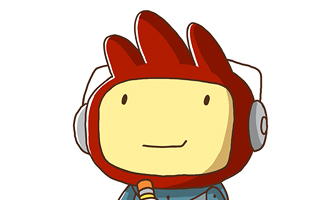
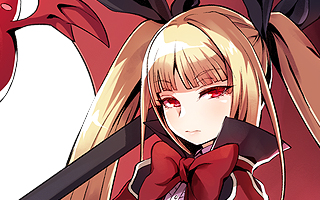
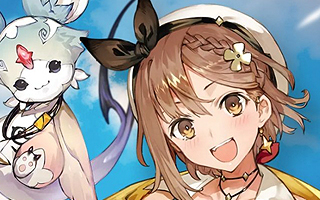
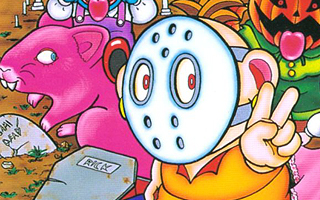
Do you agree with this list? Let us know what you think by leaving a comment below. Your opinion matters!